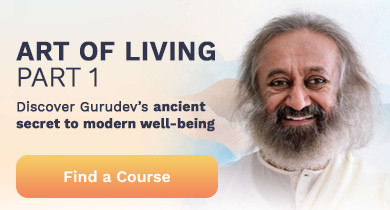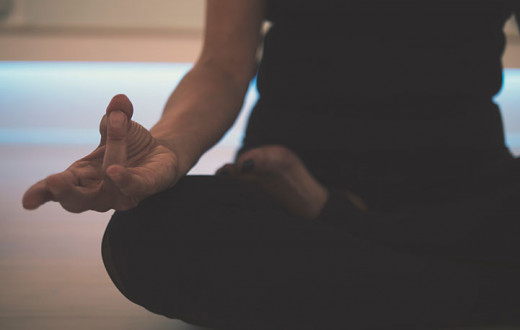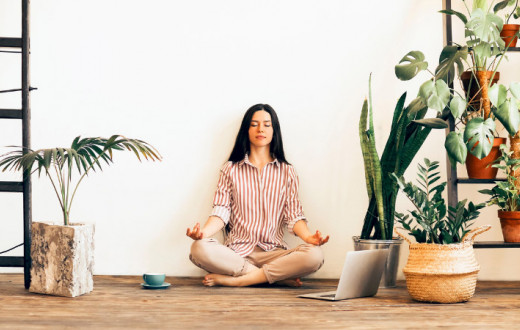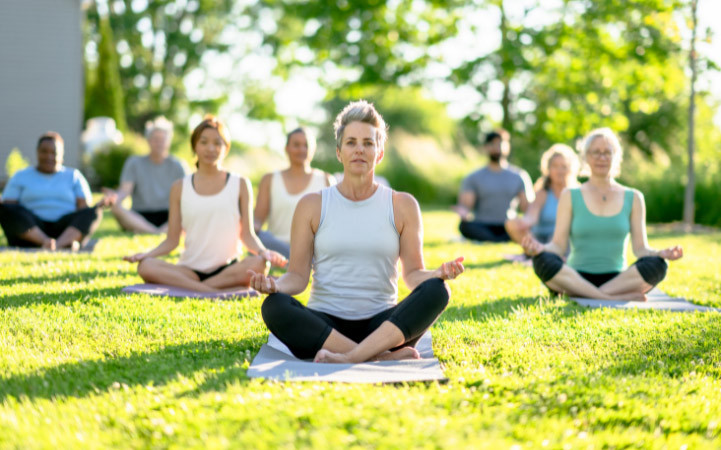
Whether you have already tried guided meditation or not, you are in the right place! Besides including several guided meditations here for you, we will also explain the differences between guided and unguided meditation. And how you can quickly move from guided to unguided meditations when you’re ready! Leaving no stone unturned, we also answer your frequently asked questions.
Want to meditate now? Try this 10 Minute Guided Mindfulness Meditation by Gurudev Sri Sri Ravi Shankar, a world-renowned meditation master.
Topics covered:
- What is guided meditation?
- Why guided meditation?
- Are guided meditation as good as other meditation techniques?
- How to do guided meditation
- What is the best time to do guided meditation?
- Where can you practice guided meditation?
- Which type of guided meditation is right for you?
- Benefits of guided meditation
- Breathing exercises and guided meditation
- Choose a guided meditation that suits your mood and goals
- What is unguided meditation?
- Guided meditation vs. unguided (silent) meditation
- When are you ready to move on to unguided meditation?
- Benefits of learning how to meditate on your own
- Experience breath-based meditation, guided and unguided
What is guided meditation?

Simply put, guided meditation is a meditation where you are gently guided by an expert into a relaxing, meditative state. Within the realm of guided meditation, there is a whole range of types, from body scans to focused attention and sleep stories to chakra meditations.
The key takeaway is that guided meditation can be a great way to start meditating or just to relax for an evening.
Why guided meditation?
Guided meditation is easy to do because it helps to bring you into the present moment. Guided meditation is especially great for beginners. Besides relaxation, it can also be used specifically for a particular moment or challenge- like if you’re feeling angry or having the worst brain fog ever- there’s a guided meditation for that! Also, guided meditation has proven to have many health benefits. Some of the health benefits of meditation include:
- Better sleep
- Lower stress and anxiety
- More awareness and concentration
Are guided meditations as good as other meditation techniques?
The answer to this question is dependent on what you’re looking for. Simple results can happen quickly with guided meditations. But if you are experiencing chronic stress or want more profound spiritual experiences, then you will want to add mantra-based and breath-based techniques.
How to do guided meditation?

Here are some tips from our meditation experts to help you find your calm and get the most out of your guided meditation experience:
If possible, find a quiet, comfortable place. This might seem like an obvious tip, but sometimes it can be overlooked. The possibilities are also endless. If noise is an issue, find a closet or sit in your car! And when it comes to comfort, ensure you’re not so comfortable that you could fall asleep (unless that’s your goal!).
Lightly follow the instructions. Follow the guided instructions without much effort. No need to concentrate. No need to do anything; just listen and let go. Guided meditations couldn’t be more straightforward.
Drop “trying”. Don’t try to get rid of thoughts. Thoughts are part of meditation. Resisting thoughts will only lead to more thoughts. If you think about it, you already know this ; ) Just think back to when you couldn’t sleep at night because you couldn’t stop thinking about a situation. Could you stop thinking about it just because it was time to sleep? Just because you didn’t want to think about it anymore? Only out of exhaustion were you able to stop thinking so many thoughts. Don’t let that be your meditation experience, either.
Drop expectations. What happens when you expect perfection, or you just want things to go a certain way, and neither happens? We are so disappointed, aren’t we? Truth be told, things rarely, if ever, go exactly as we expect them to. The same is true when it comes to meditation. Perhaps especially so.
If we have fewer thoughts in meditation but are aware that our knee is in pain, and if we focus on wanting the pain to go away, we very well could miss that we were sitting deep in meditation and our thoughts were few and far between. We could literally miss out on enjoying the meditation experience that is already happening. So, just drop any idea of what should or shouldn’t happen in meditation. You will have a better meditation experience!
Practice on a regular basis. Like going to the gym, the more you meditate, the more you’ll experience the results. If you’re considering making meditation a part of your life and want to see the best results, set a goal for yourself to meditate every day for a set time. It could be a couple of weeks, one month, or even 40 days. Committing to a more extended period will give you an accurate idea of what meditation can do for you.
Bonus tip>>> If you are unable to let go and struggling to meditate, gently bring your awareness to your breath.
When is the best time to do guided meditation?

One of the things that makes guided meditation so helpful is that it can be done almost any time of the day or night. You can also do guided meditation whenever you feel anxious or have other difficult emotions. In other words, guided meditation can be remedial in the moment. There are also guided meditations for specific times like bedtime and starting your day.
But there are times when you wouldn’t want to do guided meditation. Meditating after eating could cause indigestion. It's best to wait a couple of hours if you can. And right before bed can be a bit tricky. If you gain too much deep rest, you might not be able to fall asleep. On the other hand, sometimes a guided meditation right before bed can help you fall asleep. Unfortunately, this may require a little experimentation that might leave you unable to sleep.
Where can you practice guided meditation?
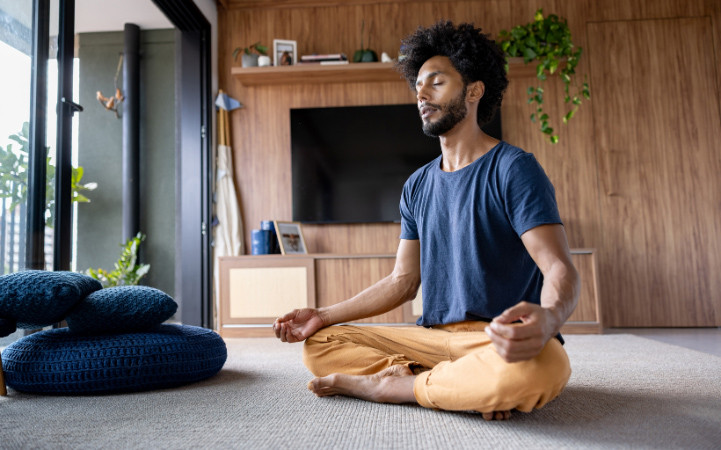
On your own with a meditation app
Apps have become not just a way of life but a way of improving your life. Download a meditation app, and you will always have access to a guided meditation whenever you need one! Try the Art of Living’s Journey app for an extensive guided meditation library. You will find the best guided meditations on gratitude, love, peace, relationships, self-esteem, uncertainty, and so much more!
Drop-in session with an experienced teacher
Yoga studios and meditation studios alike offer in-person drop-in guided meditation sessions that you can easily add to your calendar and attend on a regular basis. Many locations also offer convenient online drop-in sessions!
In a meditation course
The benefit of taking a meditation course is that you will actually learn how to meditate on your own. Just like the drop-in sessions with a live instructor, these too are available in-person as well as online.
Which type of guided meditation is right for you?
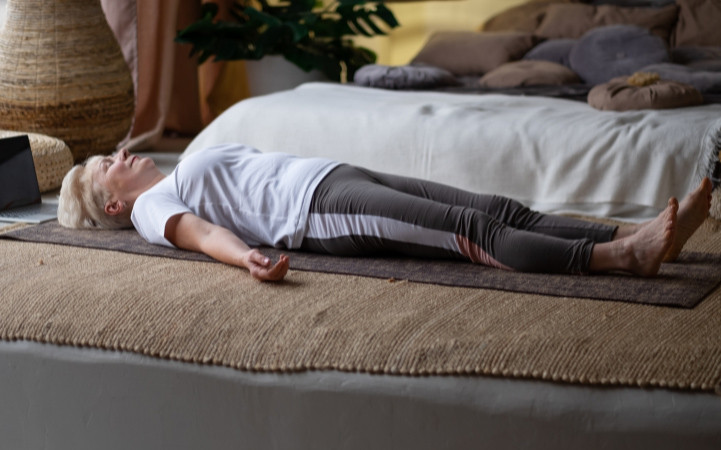
The first thing to consider is, what are your meditation goals? Are you looking for a quick fix? Or, are you interested in long-term goals, a life-long practice? Are you looking for general overall benefits? Or do you have a specific need, like lowering your blood pressure or improving the quality of your sleep? Maybe you want it all!?!
Many guided meditations are related to quick fixes. Other types of guided meditations with long-lasting benefits include the SKY Breath Meditation on the Art of Living Part 1 course and the “Hollow and Empty” meditations on the Art of Living Part 2 course. After learning SKY, you can practice the unguided version on your own.
Benefits of guided meditation
- More focus outside of meditation
- Greater calm throughout your day
- Feeling less stressed
- Less anxiety
- Mindfulness increases
- Helps with insomnia
Breathing exercises and guided meditation
Breathing is trending! Breath is the key to better and deeper meditation experiences. Breathing exercises, also known as pranayama, have been around for thousands of years.
Why do breathing exercises improve your meditation results? Because the breath is connected to your mind and emotions. Your breath can also eliminate stress and toxins! You can think of breathing exercises as light housekeeping for your mind and body before you meditate. Here’s an easy breathing exercise you can try for yourself.
Choose a guided meditation that suits your mood and goals
Stress and anxiety
These meditations will wash away stress and anxiety and have you feeling refreshed and renewed like a gentle spring rain.
Anger and Frustration
If you find yourself dealing with anger and frustration or any other negative emotion,
These three guided meditations will help you come back to your center
Relaxation
Experience a “mini-staycation” when you need it most with these relaxing guided meditations.
Better Sleep
Try some guided imagery meditations for deep relaxation and improved sleep.
Mental Clarity & Focus
Regain your mental clarity and be in the present moment as you become aware of the flow of your thoughts and feelings and let them drift away.
Energy
Deep rest is the basis of dynamism. Meditate, and feel your energy expand with these two meditations.
Contentment
Inner contentment can be yours with this effortless guided meditation.
Happiness
Overcome sadness, situational depression, and pain with these two guided meditations
Calm
Sit back and let go as you listen to these calming, guided meditations.
Peace
These two guided meditations will give you the experience you long for most.
Balance
If you feel out of sorts, this guided meditation will help you find balance.
What is unguided meditation?
Unguided meditation, sometimes called silent meditation, is any meditation practice you do on your own without a recording or live instruction. Some examples of silent meditation are breath awareness meditation, walking meditation, mantra-based meditation, and breath-based meditation. These techniques can also be guided, especially while learning or doing a group practice.
Guided meditation vs. unguided (silent) meditation
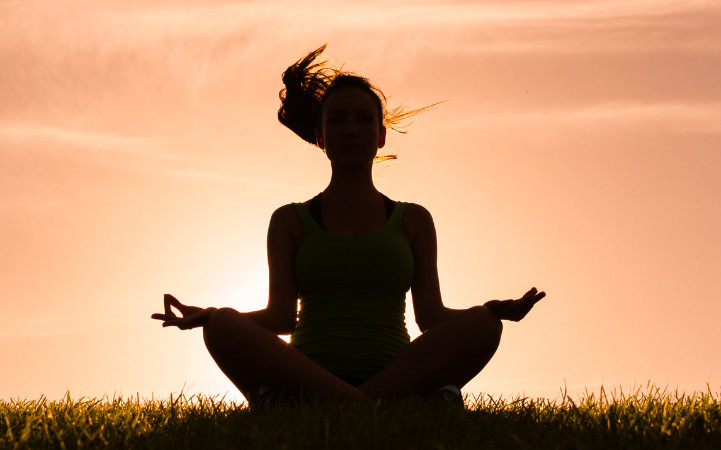
Research has shown that guided meditation can be a valuable tool for physical and mental health. The same is true for unguided meditation methods! Both have been shown to reduce stress and anxiety, giving relaxation and more mindfulness. Both have also led to help with sleep issues.
Although researchers are still trying to determine whether or not unguided is better than guided or if there is a difference between them, most practitioners who have used both methods say they have more profound experiences and longer-lasting results with unguided methods. The degree of benefits favors some unguided practices.
When are you ready to move on to unguided meditation?
Great question, right? What if I told you that you could move to unguided meditation right now?!? Are you thinking, “Oh, I don’t know about that!” Or, “Really? Tell me more!”
Moving from guided to unguided doesn’t have to be hard. The best transition to unguided actually includes guidance! Taking a meditation class where you learn a meditation technique is often guided even after instruction is completed, aka follow-ups. These classes typically offer weekly guided sessions. If you have questions or need additional support, many teachers provide one-on-one guidance.
Benefits of learning how to meditate on your own

There’s something special about having your own meditation technique. It’s like being given wings to take flight at will. No need to make sure your phone or laptop is charged. You don’t need Wi-Fi either! No need to drive anywhere. Just spread your wings, and the sky is yours!
The best part of learning how to meditate on your own is having a meditation instructor to guide you and answer any questions you might have. Can you ask your meditation app questions and receive a helpful answer on the spot? And do you really want to take advice from a chatbot? Not really. Your meditation practice deserves better! And so do you!
Another benefit of learning a meditation technique is that the experience and the benefits are more profound and more significant- exponentially. Being trained in a meditation technique sets you up for enjoying the time spent in meditation, as well as experiencing longer-lasting results.
Did I mention that when you learn a meditation technique, you have the support of a trained meditation teacher!?! I did, didn’t I?! How amazing is that--your very own, real-live meditation teacher and guide!
Experience breath-based meditation, guided and unguided

One of the most popular breath-based meditation techniques worldwide is SKY Breath Meditation. Also known as Sudarshan Kriya, SKY has helped millions of people have better physical and mental health, more happiness, and deeper meditations! Here are just some of the benefits both researchers and practitioners have reported:
- 33% increase in immune cell count
- 78% reduction in serum cortisol levels (stress hormone)
- Significant decrease in clinical/non-clinical depression
- Significant decrease in clinical/non-clinical anxiety
- Reduces PTSD symptoms
- Improved respiratory function
- Reduced addictive behaviors
- 21% increase in life satisfaction
- Enhanced deep sleep
Another benefit of learning SKY is the guidance you receive not just during the learning process but ongoing through weekly guided group follow-ups and one-on-one if needed. Many, like me, practice SKY daily on their own (unguided), but some, especially beginners, prefer to do guided SKY using the Journey app.
If you can breathe, you can do SKY Breath Meditation! It is easy to learn, and you practice for just 10-20 minutes daily. SKY is excellent for beginners and those experienced in meditation.
There’s no time like the present moment!

